This is a preprint.
Divergent ontogeny of Tissue Resident Memory and Tissue Resident Exhausted CD8+ T cells underlies distinct functional potential
- PMID: 40832341
- PMCID: PMC12363886
- DOI: 10.1101/2025.08.08.669213
Divergent ontogeny of Tissue Resident Memory and Tissue Resident Exhausted CD8+ T cells underlies distinct functional potential
Abstract
Persistent antigen stimulation promotes differentiation of exhausted CD8+ T (TEX) cells. TEX cells are distinct from circulating memory T (TCIRCM) cells but share many features with tissue-resident memory (TRM) cells established following infection resolution. CD8+ T cells co-expressing residency- and exhaustion-associated molecules in chronic diseases often correlate with clinical outcomes. However, the relationship between these cells and conventional TRM or TEX cells remains unclear. Here, we show that chronic antigen stimulation drives development of tissue-resident TEX (TR-TEX) cells that are ontologically and functionally distinct from TRM cells generated after antigen clearance. TR-TEX phenotypically resembled TRM cells but were regulated by distinct transcriptional networks and were uniquely dependent on Tox for residency programming. Although TEX progenitor cells acquired residency features upon entering chronically infected tissues, they failed to generate conventional TRM cells after antigen withdrawal. Conversely, TRM cells were able to differentiate into TEX cells during chronic antigen stimulation. Deriving cell-state specific transcriptional signatures revealed a selective association of TR-TEX cells with patient responses to immune checkpoint blockade, and only TR-TEX but not TRM cells responded to PD-1 pathway inhibition in vivo. These data suggest that TR-TEX and TRM cells are developmentally distinct cell types that share a tissue-residency program but have distinct roles in disease control.
Conflict of interest statement
Competing Interests. A.C.H received research funding from Bristol Myers Squibb and Merck. C.T.E. holds equity in Cabaletta Bio and has licensed patents with Cabaletta Bio and Novartis. J.R.G. is a consultant for Arsenal Biosciences, Cellanome, Seismic Therapeutics, and GVM1. E.J.W. is a member of the Parker Institute for Cancer Immunotherapy which supported this study. E.J.W. is an advisor for Arsenal Biosciences, Coherus, Danger Bio, IpiNovyx, New Limit, Marengo, Pluto Immunotherapeutics, Prox Biosciences, Related Sciences, Santa Ana Bio, and Synthekine. E.J.W. is a founder of Prox Biosciences, Danger Bio, and Arsenal Biosciences. E.J.W. holds stock in Coherus.
Figures
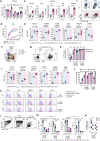
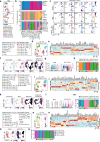



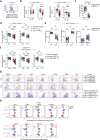








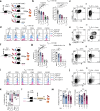
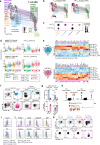

References
-
- Christo SN, Park SL, Mueller SN, Mackay LK. The Multifaceted Role of Tissue-Resident Memory T Cells. Annual Review of Immunology. 2024;42(1):317–345. - PubMed
Publication types
Grants and funding
- P30 AR069589/AR/NIAMS NIH HHS/United States
- U19 AI117950/AI/NIAID NIH HHS/United States
- P50 CA261608/CA/NCI NIH HHS/United States
- R01 AI155577/AI/NIAID NIH HHS/United States
- F30 AI174776/AI/NIAID NIH HHS/United States
- F32 AI181343/AI/NIAID NIH HHS/United States
- R01 AI115712/AI/NIAID NIH HHS/United States
- R01 CA273018/CA/NCI NIH HHS/United States
- T32 AR007465/AR/NIAMS NIH HHS/United States
- P01 AI108545/AI/NIAID NIH HHS/United States
- R01 DE034056/DE/NIDCR NIH HHS/United States
- P01 CA210944/CA/NCI NIH HHS/United States
- U19 AI082630/AI/NIAID NIH HHS/United States
- T32 AR007442/AR/NIAMS NIH HHS/United States
LinkOut - more resources
Full Text Sources
Research Materials
